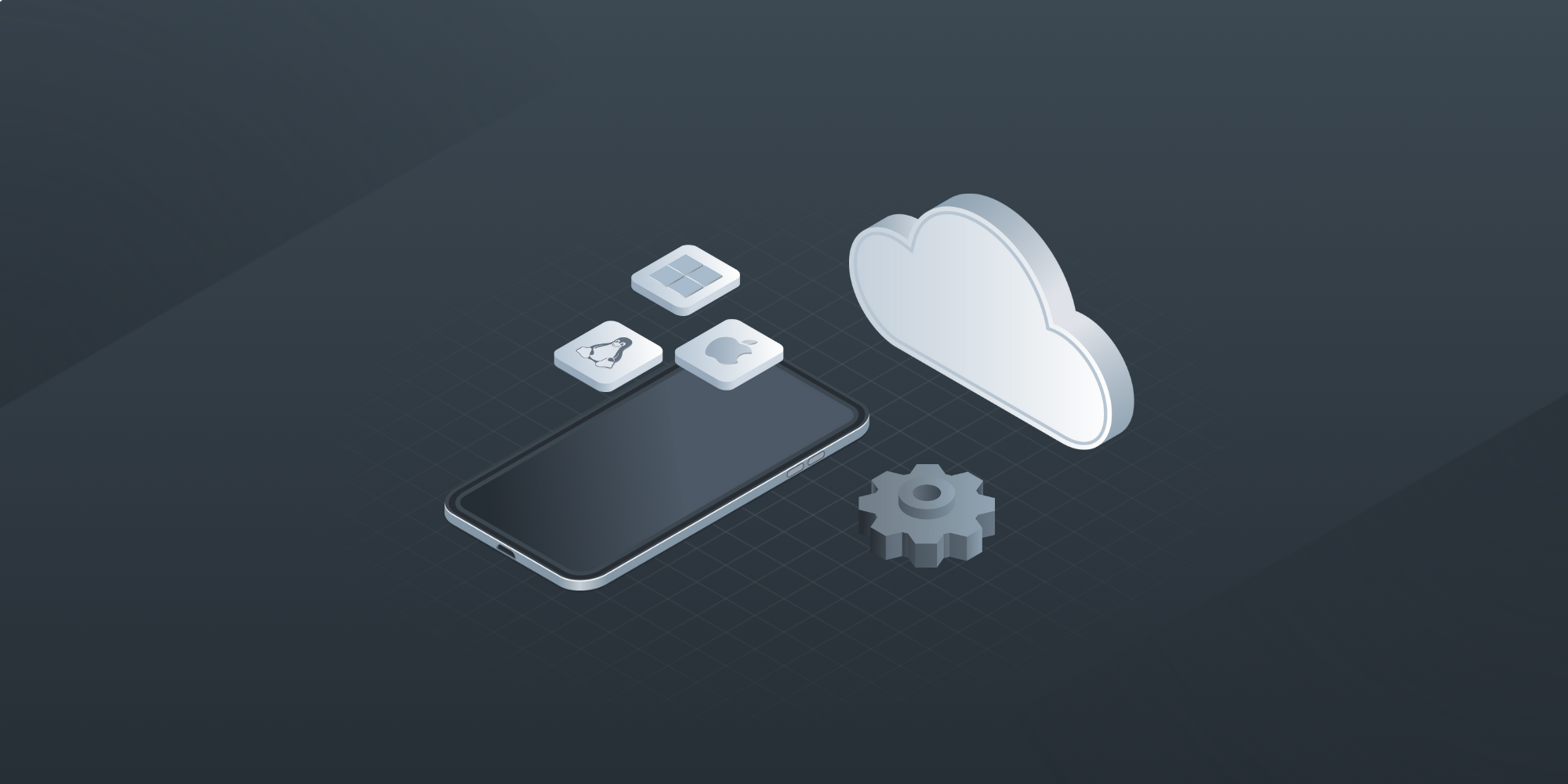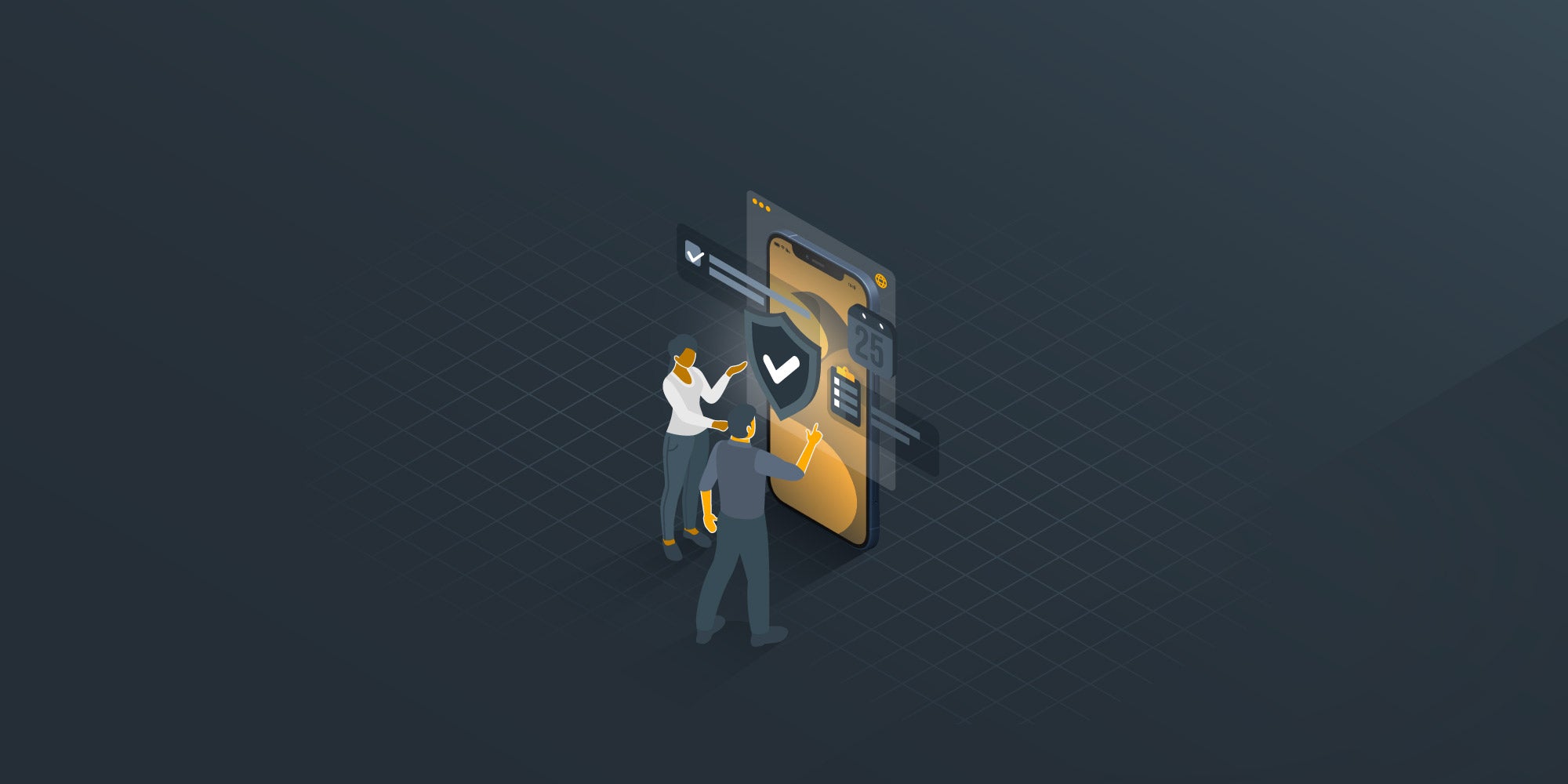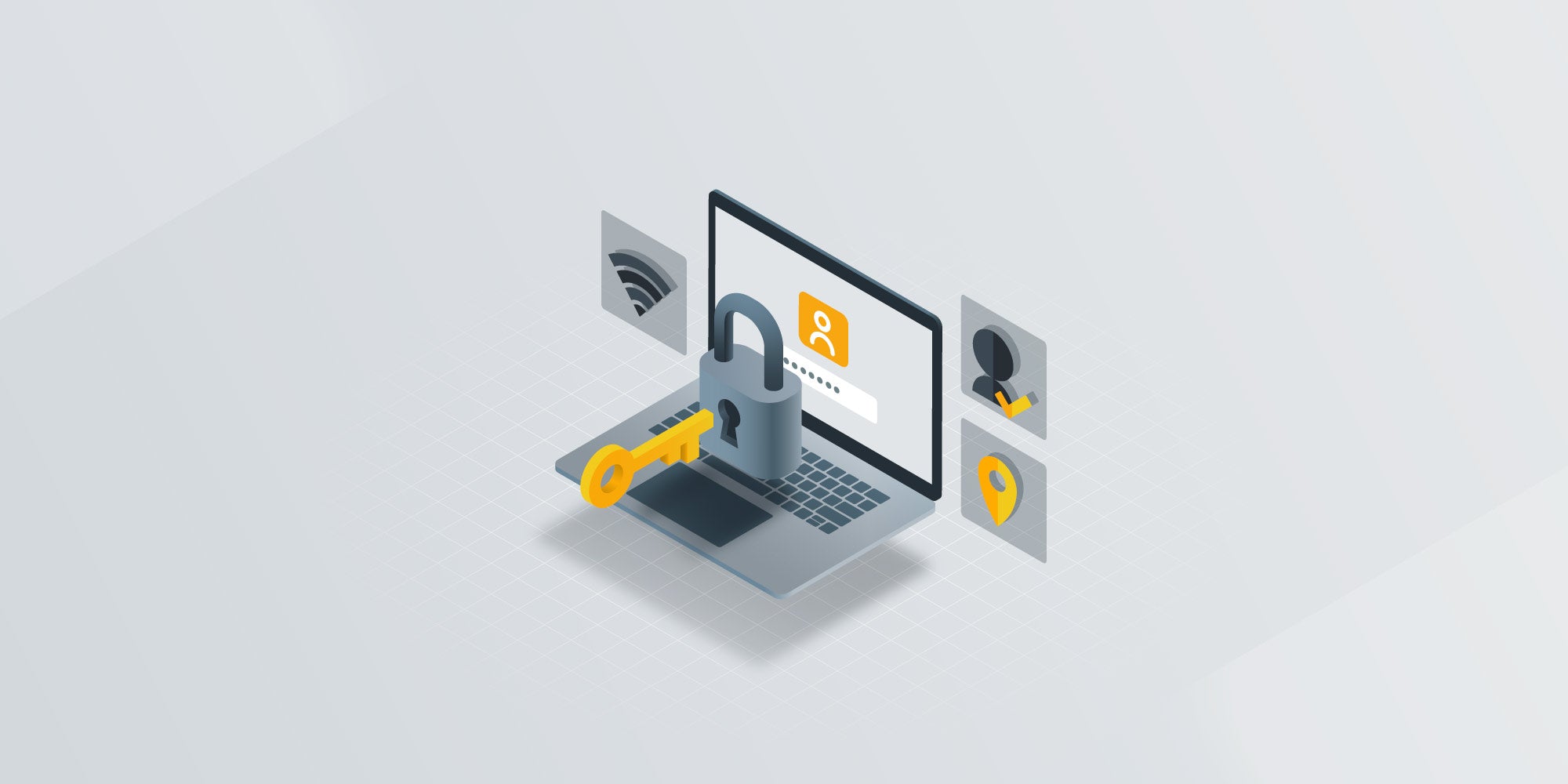12 Critical MDM benefits companies must utilize in 2024
 GroWrk Team
GroWrk Team
As organizations continue to embrace mobile technology, the need for robust mobile device management (MDM) solutions has never been greater. In fact, the global MDM market saw a remarkable $6.9 billion in revenue in 2022, with projections to soar to $22.0 billion by 2027—highlighting just how critical these tools have become in today’s workplace.
MDM allows businesses to manage mobile devices efficiently, ensuring that sensitive data remains protected, device performance is optimized, and compliance with industry regulations is maintained.
In this guide, we will discover what MDM is and how MDM benefits can transform your organization’s approach to mobile device management, providing a centralized platform for managing diverse user equipment, enforcing security policies, and enhancing overall operational efficiency.
Key takeaways
-
MDM enhances mobile security through access controls, encryption, and multi-factor authentication, reducing risks of unauthorized access.
-
Real-time device tracking and monitoring capabilities improve risk management and enable swift recovery of lost or stolen devices.
-
Automated updates and centralized management streamline operations, significantly improving efficiency and compliance with regulatory standards.
What is Mobile Device Management (MDM)?
Mobile Device Management (MDM) is a software solution that helps organizations control and secure the mobile devices (smartphones, tablets, and laptops) that their employees use for work. It allows companies to manage things like device settings, security features, apps, and data remotely.
With MDM, businesses can make sure devices are secure, sensitive information is protected, and even control which apps and features employees can access. It's like a "remote control" for managing the technology used in the workplace, ensuring everything runs smoothly and securely.

Top 12 MDM benefits companies must take advantage of
Now that we have a clear understanding of what MDM is and how it works, let's dive into the top 12 benefits of implementing MDM in the workplace:
1. Enhanced security for mobile devices

Mobile device management software enhances security by controlling access to sensitive data and ensuring it's encrypted, keeping it safe from unauthorized access. With multi-factor authentication (MFA), it adds an extra layer of protection, making sure only authorized users can access company resources. It also follows the principle of least privilege, giving employees only the permissions they need for their tasks, which helps minimize risks if an account is compromised.
Additionally, MDM protects data transmitted over untrusted networks with secure tunnels, and it actively monitors and audits access to spot potential security threats. This continuous oversight helps maintain compliance and strengthens overall security across the organization.
2. Efficient device tracking and monitoring

Another key benefit of an MDM solution is its ability to track devices in real-time, which helps organizations stay on top of risk management and optimize the deployment of mobile devices. With real-time location tracking, businesses can monitor where devices are, making it easier to manage remote employees and ensure devices are being used properly.
If a device is lost or stolen, geo-tracking features allow for quick recovery, offering peace of mind and minimizing the risk of data breaches. MDM also lets companies monitor mobile device usage to ensure compliance with internal policies. Plus, geofencing capabilities enable businesses to set virtual boundaries around specific areas, triggering alerts or actions if a device moves outside these zones, providing an added layer of security and control.
3. Streamlined device provisioning and setup
MDM also makes it easy to configure distributed devices remotely, streamlining the initial setup without the need for physical access. This is especially useful for organizations with large numbers of devices or distributed teams.
With batch configuration, IT admins can apply settings to multiple devices at once, saving time and boosting efficiency. Additionally, MDM enables the preloading of essential applications during the enrollment process, ensuring that devices are ready to use right out of the box, which helps employees get up and running quickly.
4. Centralized control and management
Another significant advantage of MDM is centralized control, which simplifies the management of various mobile devices from a single platform. This enables IT administrators to easily enforce security policies, mitigate risks, and ensure that all devices are compliant with company standards.
With MDM, managing diverse devices becomes more efficient, as applications and updates can be distributed across the organization seamlessly. Plus, integration with existing security measures like firewalls and vulnerability detection helps strengthen the overall network security, making it easier to stay on top of potential threats.
5. Automated updates and patch management
MDM also offers the benefit of automating updates and security patches across all devices, ensuring that vulnerabilities are addressed promptly and consistently. By automating this process, organizations can reduce the risk of security breaches that might occur due to outdated software.
With over-the-air updates and configurations, the entire update process becomes more efficient, eliminating the need for manual intervention and minimizing downtime, so employees can continue working without disruption.
6. Secure remote access and troubleshooting

Secure remote access is an essential MDM feature, enabling IT administrators to troubleshoot devices remotely without compromising network security. This is crucial for maintaining a secure corporate network while offering the flexibility needed for remote management.
With MDM, employees can work efficiently from anywhere, with the assurance that sensitive corporate data is protected during remote access. These features not only support a mobile workforce but also enhance overall enterprise mobility management (EMM), ensuring that security and productivity go hand in hand, no matter where employees are located.
7. Improved regulatory compliance
MDM provides detailed reporting, auditing capabilities, and preconfigured policy templates, which aid organizations in meeting regulatory compliance. Centralized device monitoring and logging through MDM make compliance audits easier and more effective. This centralized approach ensures that all devices adhere to the necessary regulatory requirements, minimizing the risk of non-compliance.
This approach helps organizations stay on top of key regulatory mandates like HIPAA, PCI-DSS, and GDPR. By maintaining IT compliance, businesses can avoid costly fines and protect their reputation.
8. Protecting sensitive data during offboarding
Proper offboarding procedures are essential for protecting sensitive information and maintaining a secure environment. When an employee leaves or changes roles, immediately revoking access to company systems through MDM reduces the risk of data breaches.
MDM also enables administrators to take immediate action, such as remotely wiping or locking personal devices, ensuring that sensitive data is protected even if a device is lost or stolen. The ability to remotely wipe or encrypt data on devices is critical for meeting data protection regulations and compliance standards. Failing to properly revoke access and secure data during offboarding can lead to significant security risks and potential data breaches.
9. Integration with Unified Endpoint Management (UEM)

Centralized Mobile Device Management (MDM) creates a unified data repository, ensuring consistency and control across all devices within the organization. This centralized approach improves data governance by streamlining oversight and making it easier to integrate and share data across various systems—all while maintaining consistent security standards.
Mobile content management (MCM) plays a key role within Enterprise Mobility Management (EMM), enhancing MDM by adding extra layers of security and management for mobile applications and content. While operational systems can still retain local copies of data to boost performance, they must adhere to the centralized management standards established by MDM.
When integrated with Unified Endpoint Management (UEM), MDM provides a comprehensive framework for managing all devices within an organization. This integration not only strengthens security but also improves overall operational efficiency.
10. Scalability and flexibility
Mobile device management (MDM) solutions are designed to be scalable and flexible, allowing organizations to easily manage a growing number of devices and users. MDM software can be deployed on-premises or in the cloud, providing organizations with the flexibility to choose the deployment model that best suits their needs.
MDM solutions also support a wide range of devices, including smartphones, tablets, laptops, and desktops, making it easy to manage a diverse fleet of devices. With MDM, organizations can easily add or remove devices, users, and applications, ensuring that their mobile device management solution grows with their business.
11. Business continuity
Mobile device management (MDM) solutions can help organizations ensure business continuity by providing a secure and reliable way to manage distributed devices.
-
With MDM, organizations can ensure that all devices are up-to-date with the latest security patches and software updates, reducing the risk of data breaches and cyber attacks.
-
MDM solutions also provide organizations with the ability to remotely wipe devices, ensuring that sensitive corporate data is protected in the event of a device loss or theft.
-
MDM solutions can provide organizations with real-time monitoring and reporting, enabling them to quickly identify and respond to security threats.
By implementing an MDM solution, organizations can ensure that their mobile devices are secure, compliant, and productive, even in the event of a disaster or outage. This helps to minimize downtime and ensure business continuity, reducing the risk of financial losses and reputational damage.
12. Cost savings and ROI
Implementing a mobile device management (MDM) solution can result in significant cost savings and return on investment (ROI) for organizations. By streamlining device management, security, and application deployment, MDM solutions can reduce the time and resources required to manage remote devices.
MDM solutions can also help organizations reduce the risk of data breaches and cyber attacks, which can result in significant financial losses. According to the Ponemon Institute's Cost of a Data Breach Report, the average cost of a data breach worldwide in 2020 was $3.86 million. By implementing an MDM solution, organizations can reduce the risk of data breaches and minimize the financial impact of a breach.
Challenges and considerations in MDM implementation

While Mobile Device Management (MDM) offers significant benefits, there are several challenges and considerations organizations must take into account when implementing these solutions.
Below are some of the key factors to consider:
1. Cost and resource investment
-
Implementing MDM can require a significant initial investment, both in terms of financial resources and time.
-
Organizations need to account for the time spent on configuration, testing, and rolling out the solution across devices.
-
Training is another important consideration—IT staff will need to familiarize themselves with the system, and end-users may also require support to understand how the new tools work.
While these costs can be substantial upfront, the long-term benefits in terms of security, efficiency, and productivity often outweigh them.
2. Employee privacy concerns
For organizations implementing MDM on employee-owned devices (BYOD), privacy concerns can arise. Employees may worry that their personal data—such as texts, photos, or personal apps—could be accessed or monitored by the employer.
-
To manage this balance, companies must be transparent about their policies and clearly communicate which data will be monitored or controlled.
-
MDM solutions can be configured to separate personal and work-related data, ensuring that only business-related information is monitored or wiped, leaving employees’ privacy intact.
-
Establishing clear boundaries and guidelines around device usage can help mitigate privacy concerns and promote trust.
3. Integration with existing IT Infrastructure
For MDM to be effective, it needs to seamlessly integrate with an organization's existing IT infrastructure, including network security systems, endpoint protection, and Unified Endpoint Management (UEM) platforms. This integration ensures that security policies are enforced across all endpoints, including desktops, laptops, smartphones, and tablets.
Organizations must ensure that the MDM solution is compatible with other IT tools in their tech stack and can be effectively managed alongside their current security measures.
4. Resistance to Change
Employees may view the new system as an invasion of privacy or a cumbersome addition to their daily tasks. IT staff, on the other hand, might be concerned about the complexity of managing a new tool or system. Overcoming this resistance requires clear communication and training.
Organizations should explain the benefits of MDM, such as enhanced security and streamlined operations, and involve employees and IT staff in the implementation process. Offering training and support throughout the transition can also help ease the adoption process. By highlighting how MDM can improve both security and productivity, businesses can gain buy-in from all stakeholders.
Leading MDM vendors
Several leading MDM vendors offer robust mobile device management software tailored to different business needs.
-
SOTI MobiControl is noted for its robust remote control capabilities tailored for Android devices.
- Jumpcloud is a comprehensive cloud-based directory platform that provides a wide range of identity and access management solutions.
-
VMware AirWatch offers a visually appealing interface and diverse equipment offerings to cater to various customer requirements.
-
ManageEngine Mobile Device Manager Plus is recognized for its updated interface and effective reporting tools.
-
IBM MaaS360 excels in customizable reporting, utilizing AI for enhanced querying capabilities.
-
Citrix XenMobile is designed for comprehensive management and is particularly effective for Microsoft integrations.
-
Microsoft Intune delivers extensive policy coverage for security but lacks features like device location tracking.
-
AppTec360 offers a low-cost option for small businesses while covering all Android and iOS versions.
-
Baramundi Management Suite allows installation on virtual machines and includes desktop management without additional charges.
Wrapping up

Mobile Device Management (MDM) offers a number of benefits that enhance mobile security and operational efficiency. From enhanced security measures and efficient device tracking to automated updates and regulatory compliance, MDM provides a comprehensive solution for managing mobile devices effectively.
Discover how GroWrk can help you implement your current MDM solution across your workforce or offer a completely new solution with its partnership with JumpCloud. We cover every stage of the IT hardware asset lifecycle from procurement to disposal.
Contact us now for a personalized demo and see the difference GroWrk can make for your organization!
FAQs
What are the benefits of customer MDM?
Customer Master Data Management (MDM) offers significant advantages, including increased sales and revenue, enhanced marketing return on investment, and improved customer experience. Ultimately, it leads to better data quality, operational efficiency, and stronger data security.
How does MDM enhance mobile security?
MDM enhances mobile security by implementing multi-factor authentication, encrypting data, and enforcing least privilege access, along with regular monitoring to identify security threats. This comprehensive approach effectively safeguards sensitive information on mobile devices.
What are the benefits of automated updates in MDM?
Automated updates in MDM significantly enhance security by ensuring devices have the latest patches, thereby reducing vulnerabilities and the risk of cyber-attacks. Additionally, they help maintain system performance and minimize disruptions to business operations.
How does MDM support regulatory compliance?
MDM facilitates regulatory compliance by offering robust reporting, auditing features, and ready-made policy templates, ensuring adherence to requirements like HIPAA, PCI-DSS, and GDPR. This significantly reduces the risk of non-compliance for organizations.






